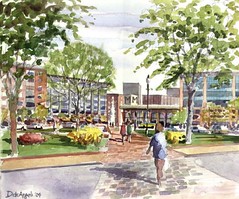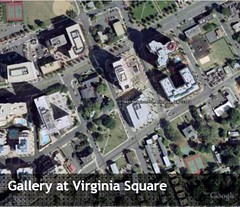Important new research confirms that development near transit substantially reduces driving

Posted August 26, 2008 at 1:36PM
An important new report based on painstaking empirical research in 17 locations finds that, on average, transit-oriented development (TOD) reduces car trips by 49 percent in the morning peak period and 48 percent in the evening peak, compared to what would be expected from standard engineering estimates typically used by municipalities.  As a result, the environmental and congestion reduction benefits of TOD are typically drastically underestimated by local authorities.
As a result, the environmental and congestion reduction benefits of TOD are typically drastically underestimated by local authorities.
As G.B. Arrington of PB Placemaking in Portland and one of the study’s principal investigators states, this is huge news:
“You drank the Kool-Aid; you know that if you link transit and land use to create transit-oriented development (TOD) the result is fewer car trips and a host of benefits. From Portland to Miami, Boston to Los Angeles, a record number of TODs are being built in the US. Yet most bankers, developers and regulators are drinking from a different cup. As a result the majority of new development adjacent to transit stops in America has been built in a manner oblivious to the fact that a rail stop is nearby. Therefore many of the hoped for benefits (less time stuck in traffic and lower housing costs to name two) are not being realized from a public investment of nearly $75 billion dollars in rail transit over the past 11 years . . .
“Our research looks at the actual transportation performance of 17 built TOD projects. This was done by counting the passage of motorized vehicles using
pneumatic tubes stretched across the driveways of TOD housing projects of varying sizes in four urbanized areas of the country: Philadelphia/N.E. New Jersey; Portland, Oregon; metropolitan Washington D.C.; and the East Bay of the San Francisco Bay Area . . .
“Over a typical weekday period, the 17 surveyed TOD-housing projects averaged 44% fewer vehicle trips than that estimated by the [standard traffic engineering] manual (3.754 versus 6.715 daily trips per unit). The weighted average differentials were even larger during peak periods – 49% lower rates during the A.M. peak and 48% lower rates during the P.M. peak.”
This is big news for smart growth because one of the objections sometimes raised by fearful neighbors and municipal authorities is that new development in existing communities will overwhelm them with new traffic. The new study proves that needn’t be the case at all. [It confirms data cited in one of my earlier posts on Arlington, Virginia, which instituted major new development along a rail transit line while preserving nearby single-family homes and generating only negligible increases in traffic.]
 Pictured along with this post are a rendering of development planned for a TOD in West Hyattsville, Maryland, near Washington, DC, and satellite views of two of the 17 TODs studied: the Mission Wells development in Fremont, California, within walking distance of the Fremont BART station; and the Gallery development, only 50 feet from the Virginia Square Metro station in Arlington. In the study, both exhibited driving trip rates less than half that predicted using the standard manual of the Institute of Traffic Engineers. The researchers also conclude that, because TOD housing requires less land set aside for parking than conventional development, developers can pursue higher densities and lower-per-unit costs, making housing more affordable.
Pictured along with this post are a rendering of development planned for a TOD in West Hyattsville, Maryland, near Washington, DC, and satellite views of two of the 17 TODs studied: the Mission Wells development in Fremont, California, within walking distance of the Fremont BART station; and the Gallery development, only 50 feet from the Virginia Square Metro station in Arlington. In the study, both exhibited driving trip rates less than half that predicted using the standard manual of the Institute of Traffic Engineers. The researchers also conclude that, because TOD housing requires less land set aside for parking than conventional development, developers can pursue higher densities and lower-per-unit costs, making housing more affordable.
The report also contains a detailed analysis of the relationships between transit usage and land use based on previously published literature, and would be an immensely valuable reference for those of us in the field even without the new findings.
 Titled Effects of TOD on Housing, Parking and Travel (TCRP Report 128), the report is not yet available in final form but will be published by the federal Transit Cooperative Research Program and the Transportation Research Board of the National Research Council. It was written and researched under the lead of G.B. Arrington (PB Placemaking) and Dr. Robert Cervero of UC-Berkeley, one of the country’s leading transportation researchers. Additional sponsors and participants include immensely talented friends at the Center for Transit-Oriented Development and the Urban Land Institute. PB Placemaking is a division of the giant infrastructure firm Parsons Brinckerhoff.
Titled Effects of TOD on Housing, Parking and Travel (TCRP Report 128), the report is not yet available in final form but will be published by the federal Transit Cooperative Research Program and the Transportation Research Board of the National Research Council. It was written and researched under the lead of G.B. Arrington (PB Placemaking) and Dr. Robert Cervero of UC-Berkeley, one of the country’s leading transportation researchers. Additional sponsors and participants include immensely talented friends at the Center for Transit-Oriented Development and the Urban Land Institute. PB Placemaking is a division of the giant infrastructure firm Parsons Brinckerhoff.